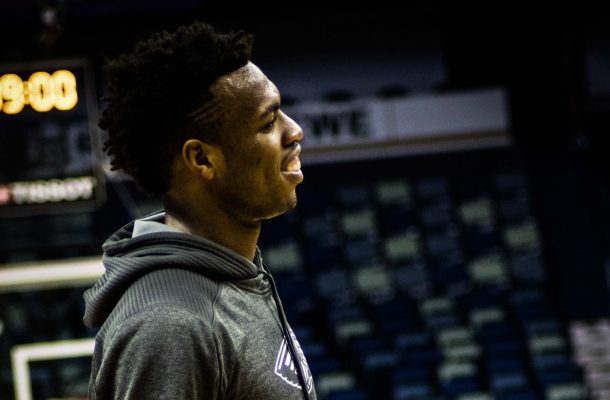« The Pelicans’ Glass Salary Ceiling
Takeaways from Pelicans Summer League »
Manipulating the Pelicans’ Glass Salary Ceiling

Required reading before continuing: The Pelicans’ Glass Ceiling, by Jason Calmes
Thanks to the diligence of Bourbon Street Shots’ own Dr. Jason Calmes, we now have a firm understanding of the ramifications of Jrue Holiday’s new contract with the New Orleans Pelicans. Though Jrue’s contract “only” contains $126 million in guaranteed money, the additional $24 million in incentives matter for reasons beyond what is deemed “likely” vs. “unlikely.” Should the Pelicans choose to use more than the $5.2 million tax-payer mid-level exception (an exception towards which Frank Jackson’s salary already counts), use the $3.3 million bi-annual exception, or acquire a player via a sign-and-trade, they will be hard-capped at just over $125 million. (The full non-taxpayer MLE is $8.4 million; using anything between $5.2 million and that amount would hard-cap the team, as would signing a player to a 4 year deal using that exception.)
Succinctly put – the Pelicans will make things very difficult on themselves if they offer any free agent over $5.2M in 2017-18. Shedding salary elsewhere will help, but the hard cap could affect other moves. These are all points that Jason made in his column, but are still worth reiterating. Though this reality of Jrue’s contract is mostly bad news, the Pelicans do have an option in their back pocket to add salary beyond that “glass ceiling” while both avoiding the hard cap and potentially not giving up anything in return – traded player exceptions.
The Pelicans created two unique exceptions over the past year via trade – one for Buddy Hield, and the other for Tim Frazier. They allow New Orleans to receive incoming salary up to the amount of those exceptions, but cannot be combined with any other exception to add a player making more than the exception. This means that the Pelicans can add a player (or players) making no more than $3,617,200 with the Hield exception, and $2,190,000 for the Frazier exception, in total. These values are their salaries when traded plus the $100,000 overage allowed by the CBA. Traded player exceptions expire one year after the trade was made: February 20th for the Hield exception and June 21st for the Frazier exception. The exceptions can not be combined to take a larger contract.
The Pelicans can look to teams that are looking to clear guaranteed money off of their books (such a team would also get a trade exception of their own in return if they stay over the cap after the trade). A few players who would fit into Hield’s trade exception:
- Noah Vonleh (Portland)
- Troy Daniels, James Ennis (Memphis)
- Malcolm Delaney (Atlanta)
- Will Barton, Emmanuel Mudiay (Denver)
- Doug McDermott (Oklahoma City)
- Tomas Satoransky (Washington)
- Seth Curry (Dallas)
- See this list for more options (though not completely up-to-date in some cases)
This list would expand considerably by adding players who would also fit into Frazier’s trade exception. Would the teams that employ these players be willing to part with them for just an exception? In some cases, almost definitely not, and the Pelicans could always add a second round pick to sweeten the deal (much like how the Wizards acquired Frazier). Other minor assets can also be traded.
Once December 15th hits, the universe of players available via trade open up, as players who are signed this summer are finally allowed to be traded. Such a player likely will not be a needle-mover, but should the Pelicans hang onto this trade exception until then, they will have the ability to add a player (or players) whose salary (or salaries) fall under those exception amounts. For example, any player signed using the $3.3 million bi-annual exception during this off-season will fall under Hield’s trade exception later this season.
The glass ceiling is real, and could very well be a problem, but the ceiling can move and so can the Pelicans by trading their free agency for, well, trades.




